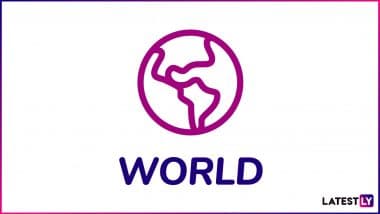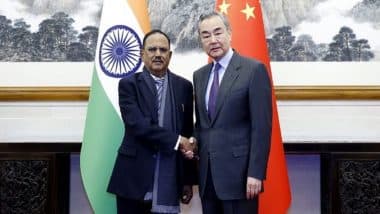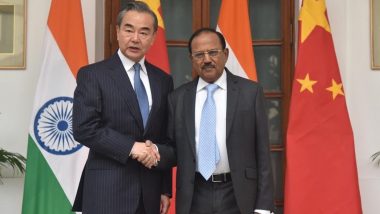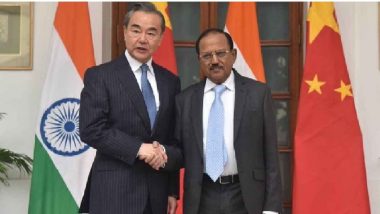Singapore [Singapore], Jun 11 (ANI): Come Tuesday morning, all eyes will be on the first public handshake between United States President Donald Trump and North Korean leader Kim Jong-un at Singapore's Capella Hotel.
That handshake will be seen as politically significant given the months and years of mud-slinging and distrust between the two countries.
In the year gone by, there has been an exchange of barbs and warnings, with each threatening to push the nuclear button to obliterate one another.
If Kim said that the American mainland was within his nuclear range, Trump was not far behind in warning that any North Korean attack "will be met with fire, fury and frankly power, the likes of which the world has never seen before".
Nuclear threats were followed by threats of imposing economic sanctions by Washington D.C. and the United Nations (UN) on an already weakened North Korean economy.
Relations between North Korea and the US have been strained since the 1950-53 Korean War and it is only in the last couple of months that a much relieved international community is witnessing a thaw and a wave of reconciliation, starting with Kim, sending a delegation and athletes to the Pyeongchang Winter Games in South Korea in February.
This was welcomed by many countries, including the United States, which described as a step for "ensuring improving inter-Korean ties."
Relations furthered hit a purple patch when Kim and South Korean President Moon Jae-in met at the Demilitarised Zone (DMZ) in Panmunjom on April 27.
Both leaders then agreed to iron out their differences and to sign a peace treaty later this year to formally end the over six decades-long Korean War.
Trump felt excited and proud but cautiously added that time will only tell on how long the bonhomie on the Korean Peninsula would prevail.
He tweeted, "Good things are happening, but only time will tell."
Thereafter, the fate of the Trump-Kim summit hung in balance for a brief while when North Korea protested against the Max Thunder military drills that were being undertaken by South Korea and the US last month.
The summit's prospects hit a further roadblock when Trump's National Security Advisor (NSA) John Bolton hinted that adopting a "Libyan model" would result in the denuclearisation of North Korea.
Pyongyang asserted that it would not meet the "same fate" as that of Libya and threatened Washington D.C. with cancelling the summit.
Post-May 24, a flurry of diplomatic activity reconfirmed the June 12 summit following several diplomatic meetings.
The deadlock finally broke when Vice-Chairman of North Korea's ruling Workers' Party's Central Committee, Kim Yong Chol, visited Washington D.C. and met Trump at the White House for a little less than 90 minutes.
Trump and Chol walked from the Rose Garden to the Oval Office, discussing the prospects of the US-North Korea summit, according to the White House.
It is pertinent to note that this was the highest-level meeting between a US president and a North Korean official in 18 years.
On June 5, the White House finally announced that Trump and Kim would meet at Capella Hotel on Sentosa Island in Singapore.
Kim arrived in an Air China 747 plane on Sunday and was received by Singapore's Minister for Foreign Affairs, Vivian Balakrishnan.
The North Korean leader then met Singapore Prime Minister Lee Hsien Loong at The Istana (Presidential Palace) in Singapore, where they discussed the North Korea-US summit and the recent developments on the Korean Peninsula.
Trump flew into Singapore from Canada after participating in the G7 summit in Canada's La Malbaie.
Before his arrival, he tweeted, "I am on my way to Singapore where we have a chance to achieve a truly wonderful result for North Korea and the World. It will certainly be an exciting day and I know that Kim Jong-un will work very hard to do something that has rarely been done before... Create peace and great prosperity for his land. I look forward to meeting him and have a feeling that this one-time opportunity will not be wasted!"
US Secretary of State Mike Pompeo said on Monday that Washington D.C. is hopeful that the summit will set the path for future productive talks with Pyongyang.
Security is tightened and as reported by the Yonhap News Agency, there is a stronger police presence, stringent security checks, and roadblocks around the area where both leaders are expected to meet. The area near the hotel has been designated by Singaporean authorities as 'special event areas'.
This also includes places around Shangri-La Hotel and the St. Regis Hotel where Trump and Kim are staying respectively.
No banners, posters and other protest materials will be allowed for agitation during Tuesday's summit.
The Singaporean authorities are keen that the most anticipated global event goes off peacefully without any glitch.
The Sentosa Island has a dark past. It is a triangle-shaped island that was once a haven for pirates.
Today, the island is now promoted as "the State of Fun" by the Singaporean government, dotted by theme parks and resorts. The south-western part of Sentosa Island consists of the Capella Hotel, which is bracketed by Universal Studios Singapore and two golf courses, according to New York Times.
The Capella Hotel, which overlooks the Singapore Strait is a combination of modern and colonial buildings, with some of them dating to the late 19th century.
The optics are high, but the outcome of this historic event may not be as expected. (ANI)
(This is an unedited and auto-generated story from Syndicated News feed, LatestLY Staff may not have modified or edited the content body)





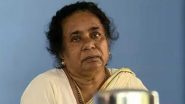


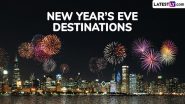


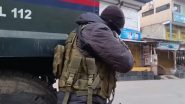

 Quickly
Quickly








